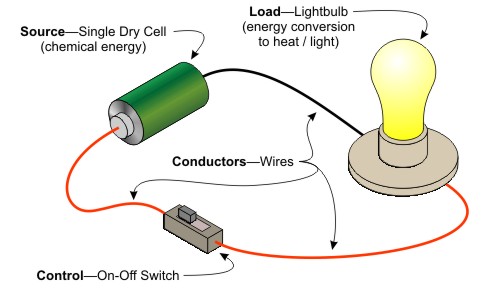Hamilton on a calm night. The importance of electricity to our everyday lives is obvious. A hundred years ago this would have been in darkness.
|
Home >> AP Physics I >> DC Circuits
|
next topic >>
|
|
This unit covers the interaction of charged particles, such as electrons, and low voltage direct
current circuits, which are common in cars, boats and battery operated equipment.
Students are expected to be able to calculate the voltages across components, the current flowing through the circuits and the energy transferred per second. Series and parallel circuits are considered, as combinations of both. The difference between the terminal voltage of a cell and its emf is explained by considering the internal resistance of a cell, which is an important way of determining the "health" of a battery. |
- 6 - 8% exam weighting for Multiple Choice questions
- 9 - 12 lessons
